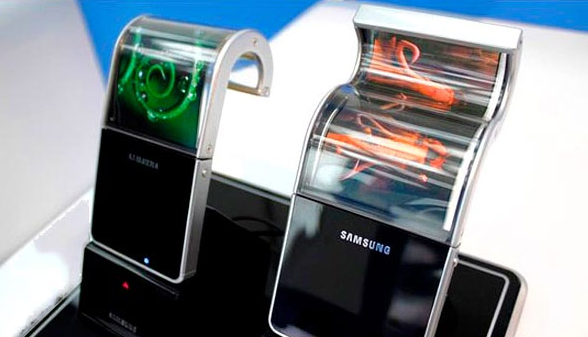flexible display
A flexible display is a bendable display on which the presentation can be made in the same form as on a rigid, unbendable, flat display as used in most electronic devices.
Flexible displays are based on well-known display technologies such as LCD technology, OLEDs and predominantly Active Matrix OLEDs( AMOLED), which, however, dispense with the non-flexible glass panel and replace it with foils. Otherwise, their structure corresponds to that of the adequate displays. This technology is called Flexible Active Matrix OLED (FAMOLED). The advantage of OLED technology is that they are self-luminous and do not require backlighting like LCD displays, for example.
Flexible displays are considerably flatter than glass displays. Their thickness can be as thin as 0.3 mm, while flat glass displays are over 1 mm thick. The weight is similar. Flexible displays are around 2.5 mg per square centimeter. In contrast, glass displays weigh about ten times as much. Depending on the display technology, flexible displays made of organic electronics can be bent up to a radius of curvature of 35 mm. They also have high charge carrier mobility.
Flexible displays in curved form are ideal as smart wearables because they adapt to body shapes and can also be worn comfortably on the body. They are also used in smartphones and also as advertising displays because of their flatness. A wide area of application is also in the field of e-books and e-paper, although these displays are based on a different technology.

